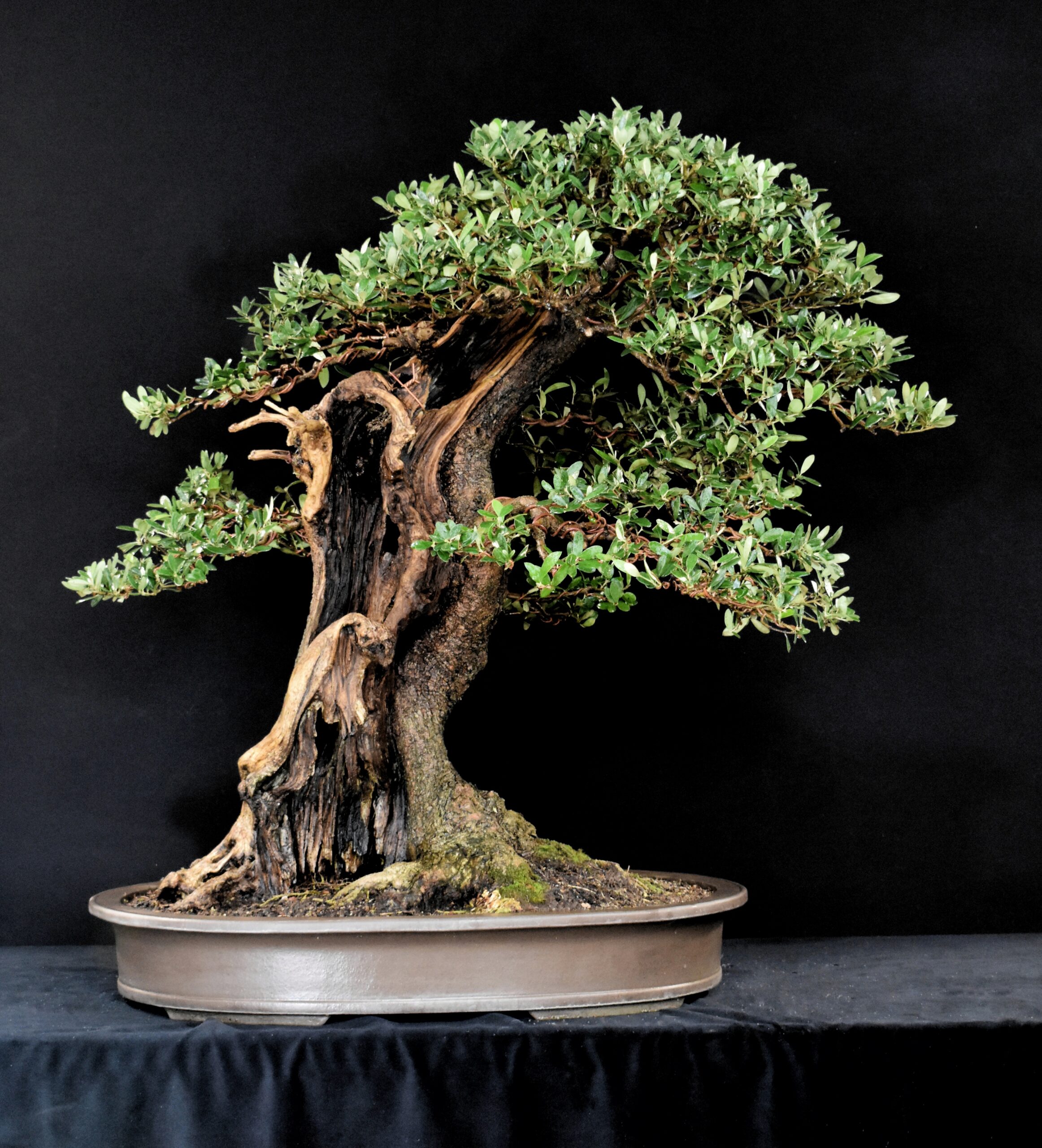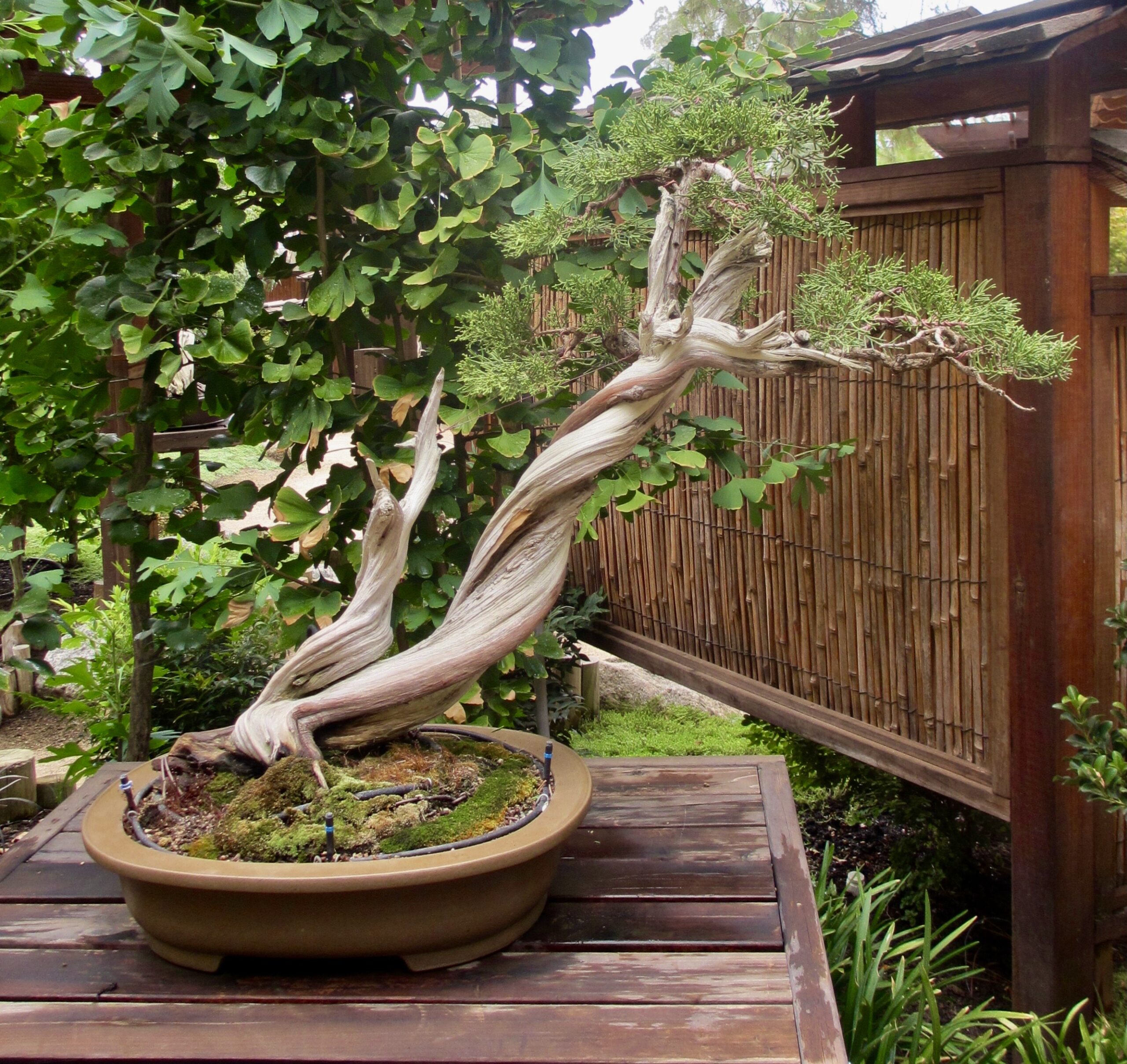You are invited to the
Dramatic Deadwood,
The Silent Poetry of Age in Bonsai
By Clark Bonsai Museum Curator,
Bob Hilvers
Broken branches and swathes of sun-bleached trunks seem so commonplace on bonsai that we accept these features as part of the art, which indeed they are. In fact, we seem to expect that all bonsai must feature “deadwood” in some form or another. Yet, understanding “deadwood” as a part of Bonsai is as complex and enigmatic as the art itself. For example, not all bonsai include “deadwood” as part of their design. A great many have none. So why then is “deadwood” such a ubiquitous aspect of Bonsai? “Deadwood” is most often seen on coniferous bonsai, specifically on junipers, cypresses and pines. This group of species are common in locations with dynamic environments that result in the kinds of natural ravages that produce “deadwood” and are the most widely distributed trees on the planet, making them also a common species for use as bonsai.
Perhaps some discussion about just what “deadwood” on bonsai is, and what it represents is in order. Some nomenclature will be helpful for this discussion. A branch, or limb that has died and all the bark weathered away, revealing the sun-bleached remnant is referred to as a Jin.
A swath of trunk, or even the entire trunk itself, that has died and the bark long since shed revealing native wood is referred to as Shari. A hollow in a trunk or large branch is referred to as an Uro. As representations of their full-sized cousins, bonsai must reflect a convincing image of a tree. Using Jin’s, Shari, and Uro’s as evidence of exposure to the elements during a long and storied life contributes to the image.
Whether the result of wind, lightning strike, drought, insect infestation, decrepit old age or any of a multitude of mishaps inflicted upon them by the passage of time; or whether intentionally created by the hand of a Bonsai practitioner, “deadwood” represents the silent poetry of age in the life of a bonsai.
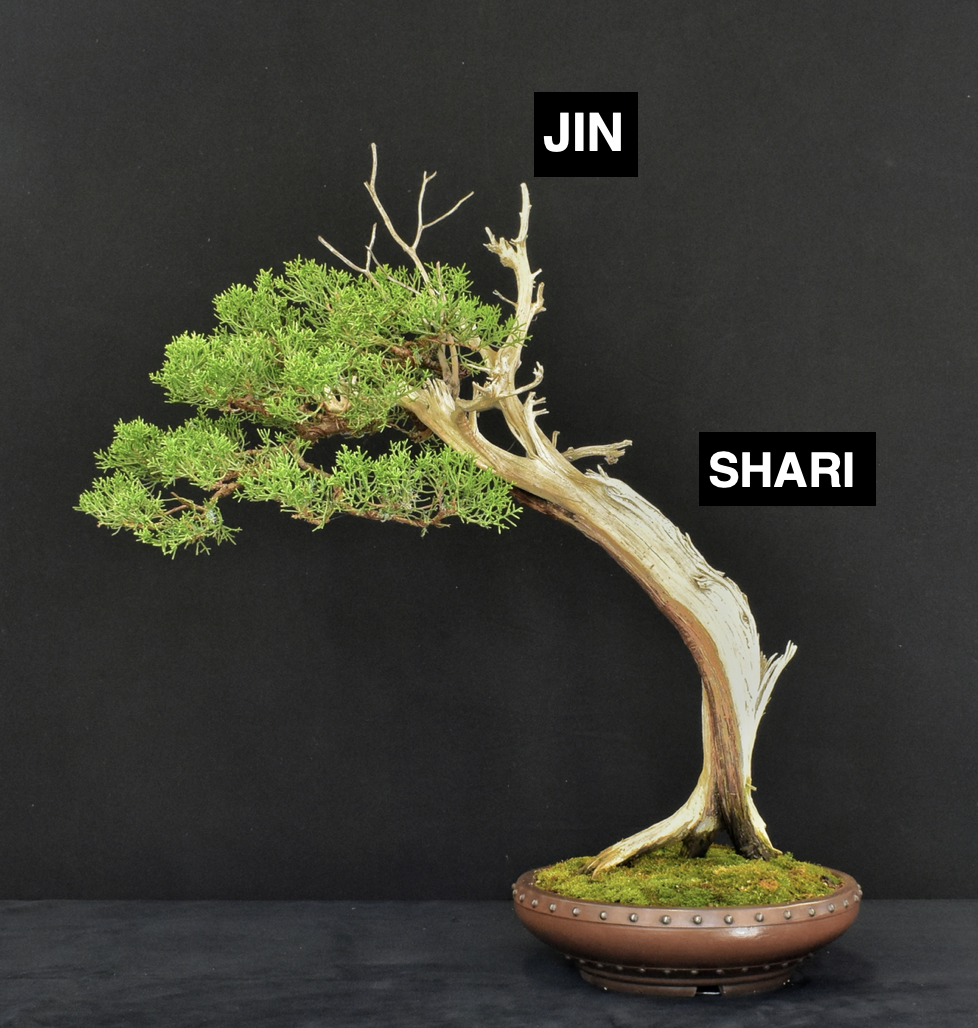
All bonsai are compositions, meaning they combine several visual elements to arrive at the final image: trunk line and inclination, the foliage and how it is arranged, a container carefully chosen for size, shape and color all combine in poetic harmony to present a unique image. Dramatically emphatic or deceptively subtle, “deadwood” provides meaning and punctuation to the composition. Among all the aesthetic aspects of Bonsai, “deadwood” is the most visible and readily interpreted as a record of past events in the life of a bonsai. The presence of “Deadwood” offers us one way to understand the wordless poetry and voiceless songs of Bonsai.
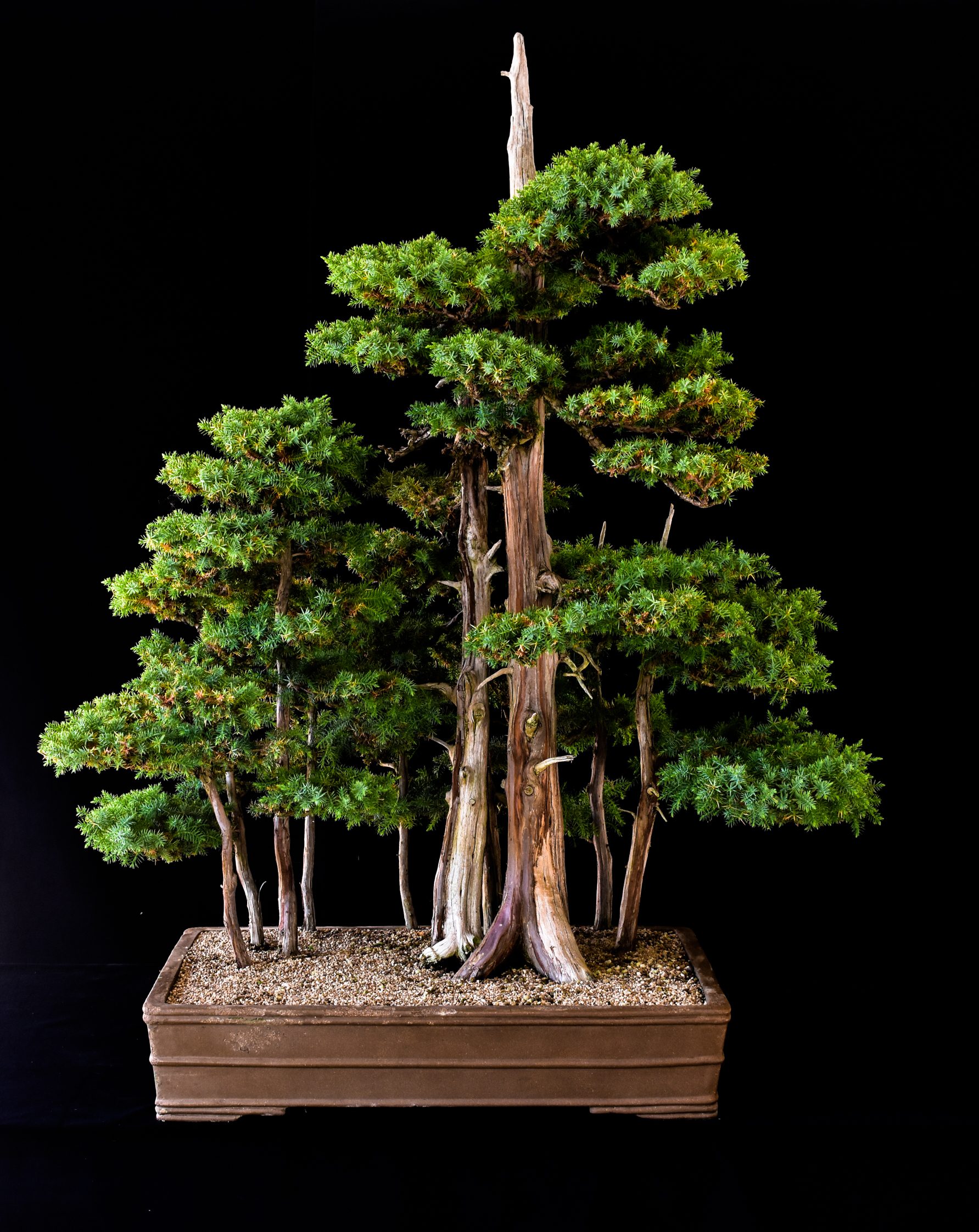
A stately fir with a silent white spire and connecting scar running down the trunk to the soil speaks of a lightning strike in the distant past. Remnants of broken and shattered branches of a coastal cypress bear silent witness to a forgotten storm.
The dead scaffolding of an entire trunk of a desert juniper supporting a struggling vestige of foliage attests to rugged perseverance in the face of a harsh and unrelenting environment. The hollowed-out trunk of a venerable monarch of an ancient oak forest is evidence of a life lived to ruinous old age.
These and countless other images of “deadwood” allow us to imagine the events in the life of a bonsai, giving us insight into the story of its existence and its age.
Considering that the art of Bonsai involves the intentional manipulation of the tree to achieve an aesthetic end, it is manifest that not all “deadwood” is created equal. Many of these age-images can be created artificially.
Bark can be stripped from branch and trunk, chemicals that bleach and preserve the wood mimic the effects of wind and sun. Specialized tools can be employed to carve and shape wood to appear old. The suggestion of age is not the only purpose for the use of “deadwood” in Bonsai. The visual impact of the silvery-white wood in contrast to verdant green foliage and shades of reddish-brown bark present a rich color pallet for Bonsai artists to render their vision.
We can delve even deeper into the use of “deadwood.” Sun-bleached branches or trunks representing the skeletal remains of dead parts of the tree set against vibrant green foliage, eloquent of life, present some bonsai as a metaphor for the “yin and yang” of life itself.
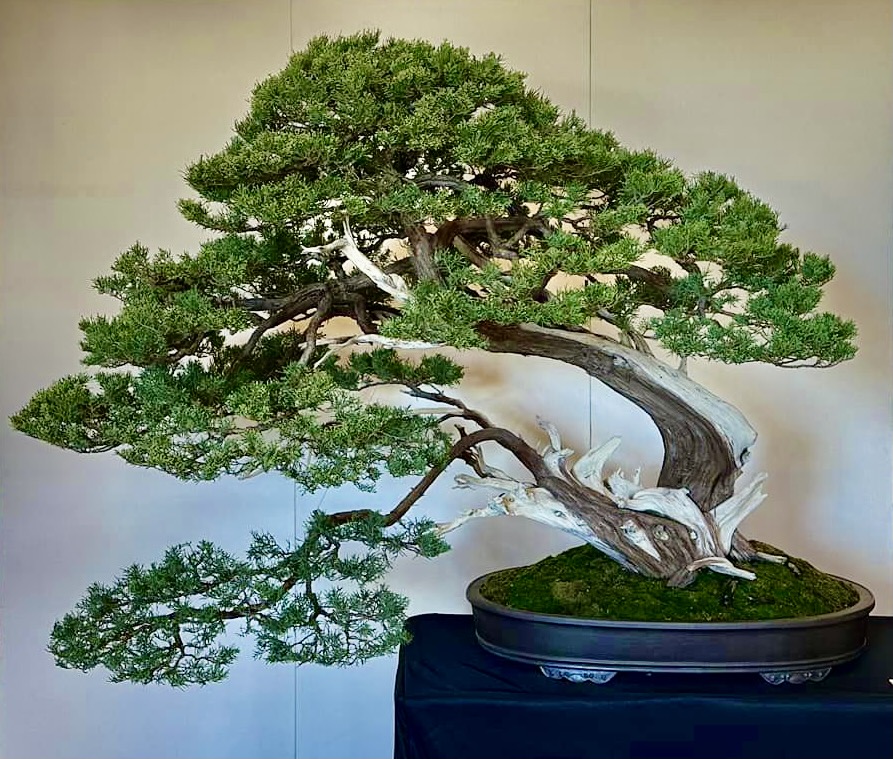

Yet, some “deadwood” in Bonsai is the product of a natural process that surpasses any artificial process used by a Bonsai artist in the depiction of age. Desert junipers of extreme age, among other plants, can be collected from the wild and trained as bonsai.
These ancient trees display “deadwood” that records episode upon episode of die back and rejuvenation spanning hundreds, in some cases thousands, of years that cannot be duplicated by technique. They are living time capsules that allow us to look back into the life history of the tree and, if we “listen” to the poetry of age in Bonsai, we are privileged to be in the presence of a life much older than our own.
When next you visit the Clark Bonsai Museum, take some time to “listen” with your eyes and carefully decipher many stories told by the “deadwood” and perhaps you will begin to “hear” the silent songs and wordless poetry of Bonsai.

